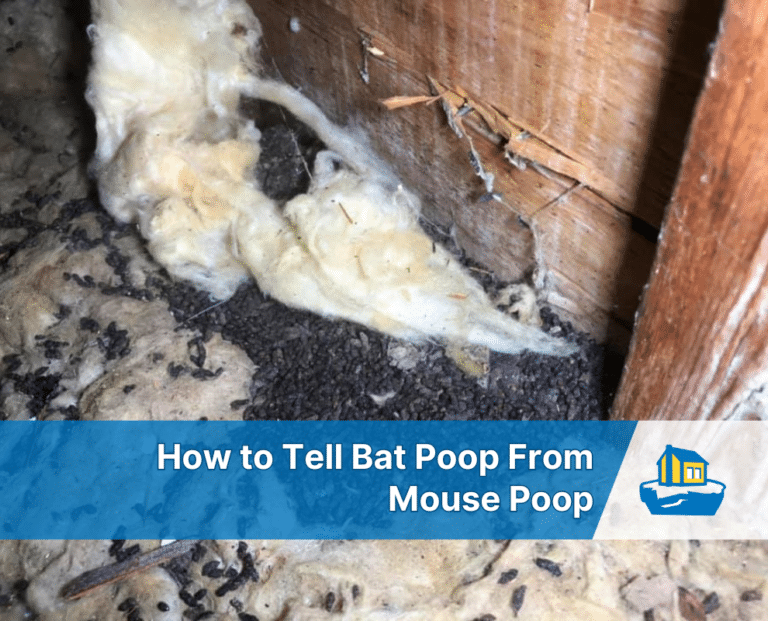4.9 1890+ Google Reviews

Have you ever discovered mysterious pest droppings in your attic or garage and wanted to identify the animal? You’re not alone! In fact, many homeowners struggle to identify the source of these little pellets. Fortunately, telling the difference is easier than you might think. Below, we’ll show you the best way to tell bat poop from mouse poop.
It might surprise you to learn that many bat species are classified as endangered or threatened. This decline in bat population often stems from humans destroying their natural habitats. However, bats play an essential role in our ecosystem by controlling insect populations and pollinating plants. Without them, mosquitoes and other pests would multiply rapidly, and certain crops might struggle to grow.
Because of their protected status, strict regulations govern how and when bats can be removed from a property. In some regions, it’s illegal to exclude or relocate bats during their maternity season when young bats are not yet able to fly. If you discover bats in your attic, it’s crucial to work with a licensed wildlife removal expert who understands these rules. By choosing ethical and legal methods—such as installing one-way exclusion devices rather than lethal traps—you’ll protect bat populations while reclaiming your home.
Tip: Before taking any action to remove bats, quickly check local wildlife protection laws. Ethical solutions protect these remarkable creatures and help maintain the natural balance in your backyard.
It’s tempting to shrug off a few rodent droppings, but you should take wild animals in your house seriously. Plus, learning how to tell bat poop from mouse poop can save you time, money, and stress in the long run.
Tip: Before you reach for a trap or try to seal an entryway, it’s crucial to figure out precisely which creature has taken up residence in your home.
Tip: If you’re brave enough to inspect the animal droppings closely, put on gloves and gently crush one. If you see shiny insect parts, you’re almost certainly dealing with a bat problem.
Tip: Observing both droppings and these additional indicators helps you confirm which pest you’re dealing with before taking further steps.
Both bats and mice come with their own set of potential health risks:
Tip: Always wear protective gear—gloves, masks, and goggles—when cleaning up droppings. This simple step reduces your risk of inhaling or coming into direct contact with harmful pathogens.
If possible, open windows or set up fans to circulate fresh air. Good ventilation helps disperse potential airborne particles.
Lightly spray the droppings with a disinfectant solution to reduce dust before cleaning. Use paper towels or a disposable scoop to remove droppings, then place them into a sealed bag.
Place all contaminated paper towels, gloves, and any other materials into another sealed bag, then discard in an outdoor trash bin. Thoroughly wash your hands and disinfect all tools once you’re done.
Tip: Take your time when cleaning to avoid stirring up dust. Rushing can lead to airborne particles that put your health at risk.
Tip: Regular maintenance is your best defense. A quick annual inspection can help spot potential entry points before pests move in.
While a single dropping or single mouse here or there may not signal a significant infestation, repeated sightings or large piles are a red flag. Here are some situations where it’s best to consult an expert pest control service:
Tip: Don’t wait until the infestation has spiraled out of control—early intervention often leads to quicker, safer resolution.
Discerning the difference between bat poop and mouse poop might feel a bit icky, but it’s a vital first step in protecting your family and your home. By focusing on the droppings' size, shape, texture, and location, you’ll quickly get a good idea of which animal is sneaking around. From there, you can decide on the right cleanup strategy and whether you need professional assistance.
Remember, prevention and early detection are key. So, watch for any unusual pellets, sounds, or smells, and don’t be afraid to reach out to an expert when necessary. With the proper knowledge and a proactive approach, you’ll keep your home pest-free and peace of mind intact.